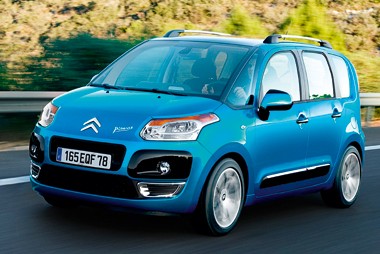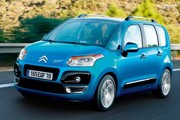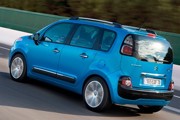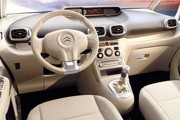Review
Citroën will be aiming to prove that every cloud has a silver lining when it rolls out yet another multi-purpose vehicle in the spring.
Officials believe the C3 Picasso – the French firm’s seventh MPV – is just the car to steer fleet customers toward more cost-effective motoring by offering an unrivalled blend of style, practicality and robust residual values.
Citroën UK fleet director Ian Hughes said: “The good overall proposition of most of our models leaves us well placed as companies begin looking to downsize or reappraise their use of particular vehicles as the recession bites.
“We’re certainly not feeling the effects of the downturn as heavily as some of our rivals.”
As the mini-MPV was launched to the media, Mr Hughes told Fleet News that a clear pricing policy over the past three years had created stability for the brand in the business car market and was continuing to contribute to long-term strategy.
He added: “CAP Monitor is giving the 1.6 VTR+ version a 37% residual value figure for three years/60,000 miles. That’s way ahead of our rivals. It’s bound to make a big impact with fleet operators and I’m expecting the sector to account for up to 40% of the car’s sales.”
Another variant on the PSA small car platform, the Citroën will compete mainly with the Nissan Note and Vauxhall Meriva, but Mr Hughes claims the model also has the potential to win business from the Ford Fiesta.
“It costs a similar amount but offers more practicality and a huge amount of flexibility, so we see it as a serious competitor”, he said.
Despite having small overall dimensions, the car uses innovative design to make a big kerbside impression.
It’s also remarkably big on the inside, with best-in-class space for passengers and luggage capacity equal to that in models from a sector above.
Citroën says its innovative interior packaging also redefines user-friendliness with sliding rear seats that fold away in a single, one-handed movement and a dual-position boot floor that can provide a flat load surface right up to the front seats.
As well as providing ample space for five occupants, the car boasts a 500-litre boot with load volume extending to 1,506 litres with the rear seats folded. With the front passenger seat backrest folded, it can also carry items up to 2.4 metres long.
With a choice of 1.4 and 1.6-litre petrol engines and the ubiquitous 1.6-litre HDi turbodiesel motor in two power levels, the car will come in VT, VTR+ and Exclusive trim levels.
Specification details will be confirmed nearer the on-sale date, but base equipment is likely to include anti-lock braking with brake assist and brakeforce distribution, six airbags, electric front windows, a CD player and height and reach adjust steering.
VTR+ is likely to include cruise control and speed limiter, a child mirror, air conditioning with a chilled glovebox, 60/40 split rear seat and trip computer. The Exclusive will probably add dual-zone climate control, rear parking assist, rear electric windows, automatic lights and wipers, a front centre armrest and gloss black front and rear bumper strips.
As well as staging a launch event for fleet users in March and a road show to visit leasing companies, Citroën will showcase the new car at trade and county show events.
Citroën UK managing director Xavier Duchemin said: “MPV models now account for 50% of sales and our experience clearly shows that motorists feel this kind of car is right for the times.
“The C4 Picasso is now our best-selling model and while it is possible the C3 may steal some registrations, I think it will win a lot more business from its rivals.
The car’s quality and packaging are strong enough for it to poach Ford Focus and Vauxhall Astra customers who need to downsize.”
Behind the wheel
A unique windscreen is the dominant feature of Citroën’s latest spacebox design.
Featuring three sections, it allows panoramic views and particularly slim A-pillars which all but eliminate blindspots.
Another striking feature in the attractive car’s roomy cabin is the high-mounted speedometer and rev counter, both of which use daylight for illumination.
In all forms, the smallest Picasso impresses with an effortless driving style and a particularly good compromise between neat handling manners and smooth ride characteristics.
Diesel again proves to be the better engine option for serious motoring. Relatively heavy for its size, the car seems to have been designed around the 90bhp 1.6 HDi unit and with an excellent blend of refinement, power and economy, this is the best of the bunch.
Even though it costs £350 more in VTR+ form than the 120bhp petrol model, the turbodiesel accelerates with greater verve, cruises with aplomb and feels generally more relaxed over long journeys.
The verdict
With class-leading space for occupants and their luggage, unrivalled versatility and greater perceived quality, the smallest Picasso sets a fresh benchmark for mini-MPVs.



















